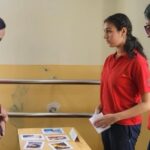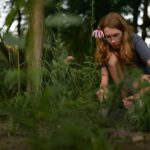Middle Years Programme (MYP) individuals and societies teacher Elizabeth Solomon explains why listening to students’ voices is the best learning an IB teacher can do.
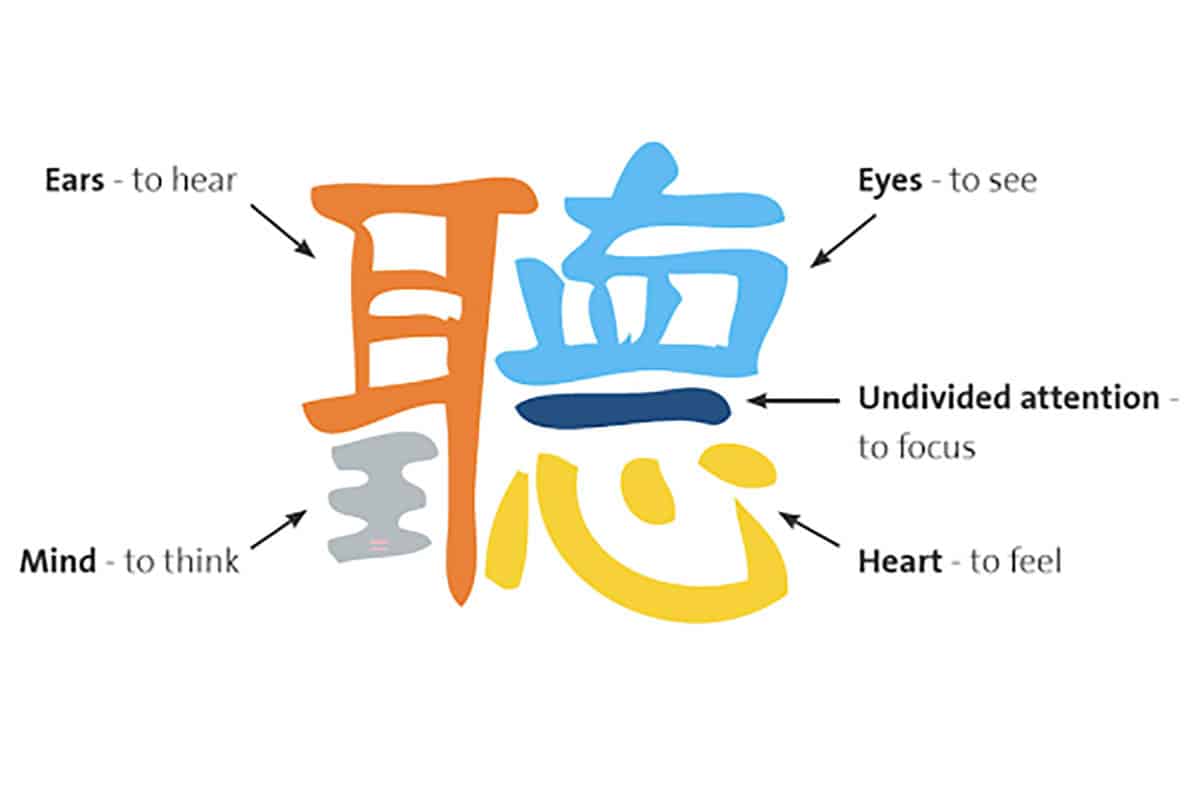
By Elizabeth Solomon
Listening, done purposefully, is a powerful form of empathy—a collaborative approaches to learning (ATL) skill that improves schools and empowers students by involving them in the approaches to teaching (ATT). And listening to our students is what we did at The Independent Schools Foundation Academy (ISF) in Hong Kong, when we began to formulate our approach to service as action a few years ago. Viewed as our bilingual school’s mission in action, our approach to service as action is most clearly articulated in our school definition of ‘global guardianship’.
In the Middle Years Programme (MYP), we began embedding service as action within the taught curriculum, with opportunities for student-initiated service in co-curricular activities and via student school leadership. In a bid to shift our service as action culture from being indirect, teacher-led and synonymous mostly with charity to a culture where service as action is student-initiated, direct, principled and transformative, we asked our students to give us feedback on the existing programme. Through surveys and student-led panel discussions, thoughts were collected and then student leaders consolidated them into action points.
First, we listened; then, we acted:
WHAT THE STUDENTS SAID: “Teach me ethics, so I may do no harm (unintentionally)”.
WHAT WE DID: On our international service trips, discussions on ethics arising from awareness about the dangers of voluntourism and privilege led to the creation of student-focused tools. Students are made aware of their privilege and identify areas where ethical discretion is needed. Here, the application of ethics has been grouped by students into five categories with pragmatic and philosophical purposes—safety, ecology, dignity, equity and integrity with guiding questions to ensure self-examination.
“Engaging with our local community is very important to ISF and Chinese values have also strongly influenced our approach”.
WHAT THE STUDENTS SAID: “Guide me, and then let me take charge of my own service”.
WHAT WE DID: Both the design and the wording of the service ladder benefitted from student critique—“I” language puts the onus of actions on the student, command terms offer opportunities for transfer and subject knowledge activation and deep reflection is promoted. In most IB World Schools where creativity, activity, service (CAS)/service coordinators cannot reach most students and making meaningful subject links is hard for teachers, students have reported success in independent use.
WHAT THE STUDENTS SAID: “Make the service as action outcomes accessible, logical and meaningful for me”.
WHAT WE DID: The service ladder is a taxonomy-based student and teacher tool and a subset of the MYP developmental ladder created by the ISF Academy, in the context of Diploma Programme (DP) studies at the University of Melbourne. It has been tested, trialled and shaped by my MYP five students. Powerfully, the seven service as action outcomes embedded within its bloom-aligned “rungs” create a logical pathway for action, with reflection pit stops at every step. Here, the students wanted a tracking device to navigate independently as they progressed on their service as action journey.
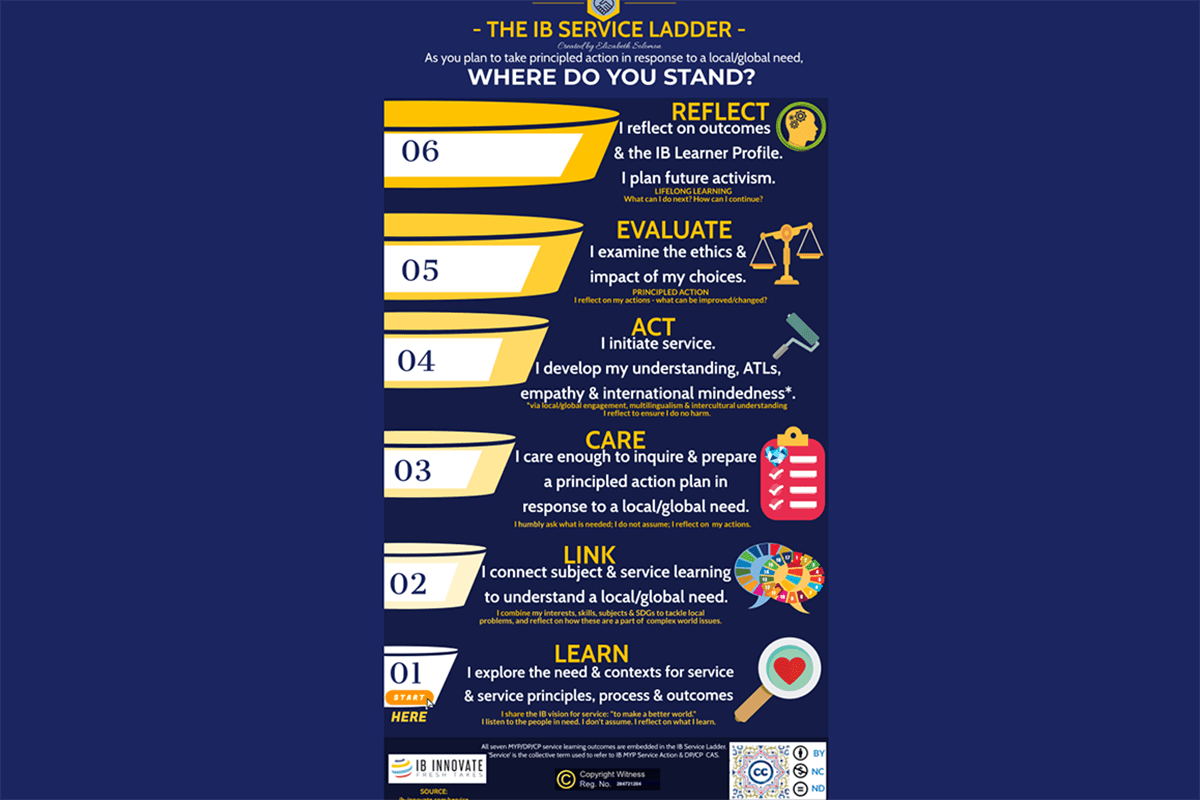
Engaging with our local community is very important to ISF and Chinese values have also strongly influenced our approach. Specifically, the Confucian virtue of ‘Ren’ or ‘仁’, meaning humanity or compassion drives this focus on listening and learning—for teachers and students alike. Aligned with the IB learner profile of ‘caring’, activating this embedded value has helped us move the discussion about service from sympathy—feeling sorry for those in need to empathy—standing with others via our shared humanity. While the idea of empathy is universally valued, understanding and implementing this complex skill is easier said than done for adults and young people alike. Having a bilingual and bicultural values-based approach has made this skill more tangible.
In the words of one of our MYP five students: “I may never fully understand the experience of another, but as a human, I have experienced pain. I can use this shared understanding to stand with them and connect and help as needed. Then, I become a better human; and if we all do this, it is how we become better ‘ren’ (people)”.
Empathy teaching tool
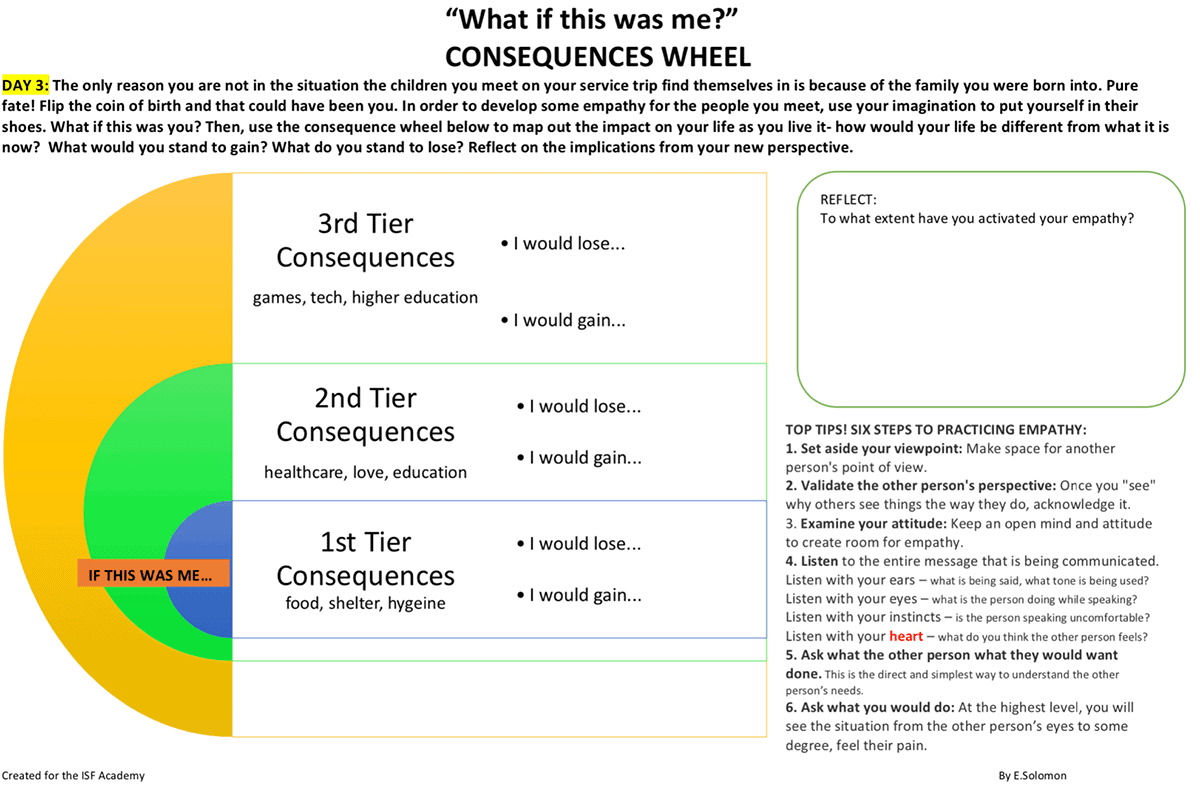
Embedding ethics into the curriculum encourages our students to be reflexive and self-critical of their actions. Students help design self-regulating tools to use in service as action like the one below. These tools spark honest discussions about intended vs actual impact, as they attempt to live up to the IB mission of “making the world a better place”.

Linking service and subject goals in the taught MYP curriculum has been the linchpin to making service as action integral to our teaching and learning. This shift in paradigm, which required teacher professional development, was achieved by the service as action coordinator participating in departmental meetings over a year, with a toolkit of ideas for integration into specific subjects. Co-creation of resources in units where service as action was an organic fit helped students understand the nuances and complexities of the “wicked” problems of the world.
All in all, the evolution of service as action at the ISF Academy is ongoing. Our collective thinking about service is constantly improving as student’s voice grows stronger. The process is messy, far from perfect and requires hard work. Yet, we are committed—both to our school’s mission and that of the IB—for the empowerment of our students who are the future guardians of our tumultuous world. One truth is clear to us: student involvement in our process has meant heightened awareness, better engagement and more mindful service actions.
This listening to our students has happened with our ears, eyes, mind and heart and has given our teaching a unique focus. Inadvertently, we, the teachers, have walked away with some of the best professional development any IB educator can ask for.
Have you listened to your students today?
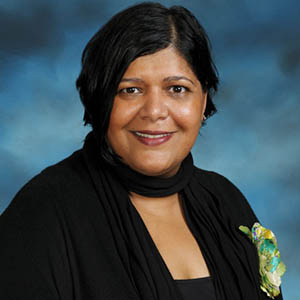
Elizabeth Solomon is a Middle Years Programme (MYP) individuals and societies and Diploma Programme (DP) English language and literature master teacher at the ISF Academy. She has just finished her second master’s degree, specialising in DP assessment at the University of Melbourne. Elizabeth is passionate about student-centered curricula. As the former service as action coordinator at her bilingual school, she co-developed the resources in this community post in collaboration with her MYP students. Raised between Mumbai, London, and Jerusalem, Elizabeth is an equity & peace activist who has lived and worked in India, Israel, Japan, and China. She now lives in Hong Kong with her partner and her twin teenagers, who are also MYP students and often, her best critics.
If you enjoyed this story, consider reading more below:

